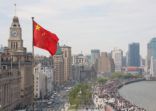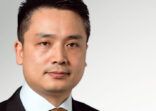The Mutual Recognition of Funds (MRF) scheme was the main reason to launch the platform, Egloff told FSA. “We started to work on the [platform] the moment the MRF scheme was announced,” he said.
Launched in late 2015, MRF allows eligible Hong Kong- and China-domiciled funds to be sold across the border. It is also one of very few channels for mainland investors to invest in offshore assets.
UBS is planning to launch two funds on the platform next month: the China High Yield Bond Fund and the China Opportunity Equity (USD) Fund. Both were approved by Hong Kong’s Securities and Futures Commission in January.
The bond fund is a new strategy managed by Hayden Briscoe, head of fixed income for Asia-Pacific. It invests mainly in offshore hard currency bonds, with maximum 20% in onshore assets.
The equity fund is a copy of the firm’s Luxembourg product – a flagship fund managed by Bin Shi, with $1.7bn of assets. The Hong Kong fund differs from it slightly due to local regulations, such as the requirement to have more flexibility on the fund’s cash holdings, Egloff noted.
The two new funds are hoped to attract both onshore and SAR investors, since an MRF-approved fund can only raise up to 50% of assets from onshore clients.
Egloff thinks that MRF has a potential to give Hong Kong fund industry a significant boost. “We believe over the next ten years, Hong Kong can become the third largest domicile globally, as long as the MRF scheme continues to work out,” he said.
“[China’s banks] want more internationally diversified portfolios today for their clients,” said Egloff. “Ultimately, they will need all the building blocks such as US equities and European equities,” he added.
Selling funds in the onshore market, however, may require more than a copy-and-paste approach, said Egloff. “The appetite of Chinese investors is different, and the way they look at benchmark-oriented investments or asset allocations is different than [that of] investors in the US and Europe.”
A two-way street
Luxembourg- and Ireland-domiciled funds are widely accepted in Asia, but Egloff thinks the distribution can also flow the other way.
“More and more I think we will sometime launch products here first, even not only China or Asia-focused products, and later bring them back to Luxembourg,” he said.
He added that the firm is considering bringing the new China high yield bond fund back to Luxembourg.
There are about 1,000 Luxembourg funds registered in the SAR as of the end of 2016, compared to 705 products domiciled in the territory, according to Securities and Futures Commission.
Funds registered with SFC for sale in Hong Kong by domicile
|
Place of domicile |
Number as of 2013-end |
Number as of 2016-end |
AUM as of 2016-end ($bn) |
|
Hong Kong |
459 |
705 |
122.7 |
|
Luxembourg |
961 |
1,008 |
850.7 |
|
Ireland |
271 |
264 |
155.5 |
Source: SFC
















